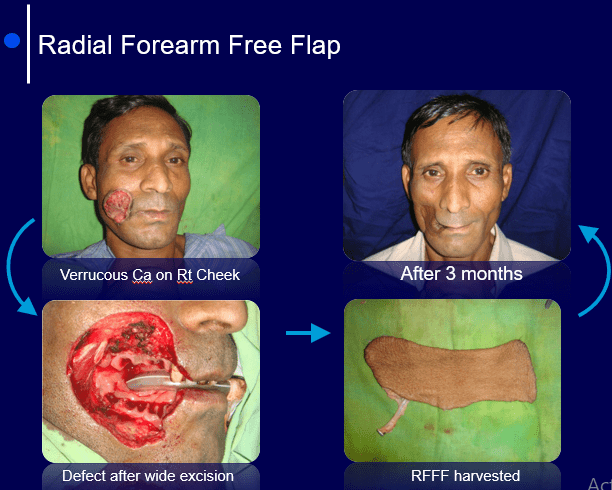Introduction: Isolated facial paralysis is a common problem, which usually resolves by itself. But a considerable number fails to recover. These patients tend to suffer for the rest of their lives. In young adults this can be frustrating and can practically cripple their lives. In the past static methods of surgery (using slings by fascia lata etc.) failed to give a natural look. This was because the slings used did not have the ability to contract while the patient smiled. Recently dynamic procedures like masseter or temporalis muscle transplantation is being done to provide the patient with more natural facial expressions. As such these surgeries are also known as “Reanimation” surgery.
Case Report: A 16 years old girl presented with right-sided facial palsy. She complained that even after two years of the paralysis there was no sign of improvement. Nerve conduction test revealed no activity of lower the facial nerve on the affected side. The upper part of the nerve was intact. After detailed discussion with the party a decision of massetter transplant surgery was taken.
Procedure: Under G/A the massetter muscle was approached by right submandibular incision. The muscle was dissected free from its insertion in the mandible. It was then partially divided into three slips starting from the inferior margin. The slips were done carefully and stopped at the appropriate level to avoid injuring the neurovascular bundle, which comes from and enters the sup. Part of the muscle, an incision along the nasolabial fold was made to approach the orbicularis oris muscle. The previously dissected massetter was then transposed superiorly and mild traction was applied to deliver it through the nasolabial fold incision. Each of the muscle slips was then sutured to the paralyzed orbicularis oris muscle using 4/0 prolene. Middle slip was anchored to the angle, and sup. and inf. Slips were anchored to the upper and lower parts of the orbicularis respectedly.The incision was closed by 6/0 subcuticular vicryl.
Post operatively the patient was advised to practice clenching her teeth every time she smiles. This was because by clenching action. The transposed massetter muscle will pull the right.angle of the mouth superolaterally to match the movement of the non-paralyzed side.
Discussion: As we know the massetter muscle is supplied by the mandibular nerve, which remains intact during facial nerve paralysis. Within a couple of months the patient learned how to use the newly placed muscle every time she smiled. This is the whole idea behind reanimation surgery.

